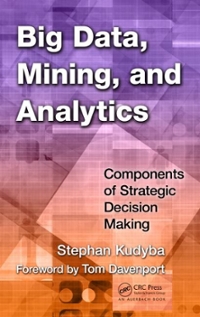Answered step by step
Verified Expert Solution
Question
1 Approved Answer
The Common Vulnerability Scoring System ( CVSS ) provides a framework that supports the classification and assessment of severity for specific vulnerabilities. A vulnerabilitys CVSS
The Common Vulnerability Scoring System CVSS provides a framework that supports the classification and assessment of severity for specific vulnerabilities. A vulnerabilitys CVSS score is made up of a base score: how easily a vulnerability can be exploited and how much damage it can inflict, and in some cases, a temporal score: ranking how aware people are of the vulnerability, what remedial steps are being taken, and whether threat actors are actively targeting it In addition, a vulnerability may be given an environmental score: a more customized metric specific to an organization or work environment.For this assignment, you will choose one of the security vulnerabilities below. Then, using the CVSS v calculator Links to an external site., assign values that describe the specific vulnerability, such as exploitability metrics and impact metrics. Assume your organization has a significant deployment of the impacted software. Based on the resulting CVSS score and the potential impact on your organization, construct a course of action to be presented to your change advisory board that includes the following:CVSS v calculationsVulnerabilitys criticality in the context of your organizationA recommended course of action to include possible mitigations and followon remediation and patchingAdditional ResourcesCVSS v User Guide Links to an external site.Mastering CVSS v Elearning Transcript Links to an external site.Recorded Future CVSS Scores: A Useful Guide Links to an external site. Vulnerability #: Microsoft Exchange Server PreAuthentication Remote Code Execution CVEVulnerabilityA serverside request forgery SSRF vulnerability exists on specific versions of onprem Exchange servers that provide an unauthenticated, remote actor sending crafted HTTP requesting admin access to the system.AttackThis vulnerability, part of an exploit chain, can be exploited only when the following conditions are present:The Exchange onprem server must accept untrusted connections over port for the vulnerability to be exploited.The HTTP request contains an XML SOAP payload directed at the Exchange Web Services EWS Application Programming Interface API endpoint to exploit this vulnerability. The SOAP request bypasses authentication using specially crafted cookies. It allows an unauthenticated, remote actor to execute EWS requests encoded in the XML payload and ultimately perform operations on users' mailboxes. This vulnerability, combined with the knowledge of a victim's email address, means the remote actor can exfiltrate all emails from the victim's Exchange mailbox.An attacker can bypass authentication and impersonate the admin by chaining this bug with another postauth arbitrary filewrite vulnerability CVE to get code execution. As a result, an unauthenticated attacker can execute arbitrary commands on the Exchange server.The vulnerability affects Windows versions below Exchange CU below Exchange CU below Exchange CU below and Exchange CU below Proofofconcept POC code to exploit this vulnerability was released on March on GitHub, followed by another POC released on March Vulnerability #: Android Privilege Escalation CVEVulnerabilityA vulnerability in the ioctl handlers of the Mediatek command queue driver creates a possible outofbounds write due to insufficient input sanitization and missing SELinux restrictions. This could lead to local escalation of privilege with no additional execution privileges needed. User interaction is not needed for exploitation.AttackThis vulnerability can be exploited only when the following conditions are present:Attackers can gain access to the affected device.An exploit script allows an attacker with device access to read and write to the system memory, thereby gaining root access on a vulnerable device. Impacted devices include Android and Android Later devices are not vulnerable to this exploit.Vulnerability #: macOS Big Sur TCC Security Bypass CVEVulnerabilityA security bypass issue with Apple's Transparency Consent and Control TCC mechanism is being exploited in the wild. CVE spotted by Apple specialists Jamf, can be abused by a malicious application surreptitiously taking screenshots of Macs. The TCC is the system that controls what resources an application can access, such as its camera and microphone.AttackAn attacker can gain Full Disk Access, Screen Recording, or other permissions without requiring the users explicit consent by exploiting this bug. Additionally, the bug can be potentially exploited to access files on the machine and record from the camera and microphone.This vulnerability impacts macOS Big Sur Apple is aware of a report that this issue may have been actively exploited. XCSSET Links to an external site. malware was observed using this bypass to take screenshots of the victims desktop without requiring additional permissions. By utilizing an AppleScript module to identify an application with permissions to capture a screenshot, the XCSSET malware compiles it into a custom AppleScript application injected into that donor application.Vulnerability #: F BIGIP Unauthenticated Remote Command Execution CVEVulnerabilityAn unauthenticated, remote command execution flaw CVE exists in the iControl REST interface in F BIGIP and BIGIQ enterprise networking infrastructure. It could allow attackers to take complete control of a vulnerable system.AttackAn unauthenticated attacker with network access to the iControl REST interface can exploit this vulnerability to execute arbitrary system commands, create or delete files and disable services. Once an attacker has complete control over a loadbalancing appliance, they can also control the web applications served through itThis vulnerability can only be exploited through the control plane and cannot be exploited through the data plane. Additionally, the BIGIP system in Appliance mode is also vulnerable.
Step by Step Solution
There are 3 Steps involved in it
Step: 1

Get Instant Access to Expert-Tailored Solutions
See step-by-step solutions with expert insights and AI powered tools for academic success
Step: 2

Step: 3

Ace Your Homework with AI
Get the answers you need in no time with our AI-driven, step-by-step assistance
Get Started


